If you’ve ever been curious about the cost of purchasing an ounce of weed, you’re not alone. As marijuana legalization continues to gain momentum in various parts of the world, more and more people are interested in understanding the price variations and factors affecting this popular substance’s cost.
In this article, we will explore the different factors that contribute to the price of weed, including regional price variations, the quality of the strain, and the difference between dispensary and black market prices.
When buying weed, the price can vary significantly depending on your location. Different regions have different laws, regulations, and supply and demand dynamics, which can all influence the cost of purchasing an ounce of weed. The legalization of marijuana in some areas has led to increased competition and a more regulated market, resulting in lower prices.
On the other hand, in areas where marijuana is still illegal, the black market can drive up the cost due to the risks involved in its production and distribution. Understanding these regional price variations is crucial to understanding the cost of an ounce of weed.
Factors Affecting the Price of Weed
Several factors can influence the price if you’re wondering about the cost of an ounce of weed.
One of the key factors is the level of social acceptance of cannabis in a particular region or country. In places where cannabis is widely accepted and legalized for both medical and recreational use, the price tends to be lower due to a larger supply and competition among sellers. On the other hand, in areas with stigma and strict regulations surrounding marijuana, the price can be significantly higher as it is more difficult to obtain and distribute.
Another factor that affects the price of weed is taxation policies. In some regions, governments have imposed heavy taxes on cannabis products, which can significantly increase consumer prices. These taxes are often used as a way to generate revenue for the government, but they can also drive up the cost for consumers.
Additionally, the cost of production, including factors such as cultivation, processing, and distribution, can also impact the final price.
Overall, the price of an ounce of weed can vary greatly depending on the social acceptance and taxation policies in a given area and other factors related to production and distribution.
Regional Price Variations
You’ll find prices for an ounce of weed vary widely in different regions. This is due to various factors, including global market trends and the impact of legalization.
In some areas where marijuana is legal, such as certain states in the United States and countries like Canada, the price of an ounce of weed can be higher compared to regions where it is still illegal. This is because the demand for marijuana in these legal markets is often higher, increasing prices. Additionally, the cost of producing and distributing marijuana in a regulated market can be higher, contributing to the higher prices.
On the other hand, in regions where marijuana is still illegal, the price can be lower due to the risks involved in the black market. This can include the costs of smuggling and the potential for legal repercussions. However, it’s important to note that prices can still vary within illegal markets, depending on availability and competition.
Overall, the price of an ounce of weed is influenced by global market trends and the impact of legalization. While legal markets tend to have higher prices due to increased demand and regulation, illegal markets can have lower prices due to the risks involved.
Different Strains and Quality Levels
When it comes to purchasing marijuana, the strain and quality play a significant role in determining the price per ounce. Different strains of weed can vary widely in terms of their effects and potency, which can impact their market value.
Some popular weed strains include:
- OG Kush: Known for its strong and relaxing effects, OG Kush is a classic strain often sought by experienced users.
- Sour Diesel: This strain is known for its energizing and uplifting effects, making it a popular choice for those looking for a daytime high.
- Girl Scout Cookies: With a sweet and earthy flavor, Girl Scout Cookies is a strain that provides a balanced high, combining euphoria with relaxation.
- Blue Dream: A hybrid strain that offers a gentle and uplifting high, Blue Dream is often used for stress relief and relaxation.
In addition to the strain, the quality of the weed can also impact its price. Higher-quality buds that are more potent and have better flavor profiles are generally more expensive. The legality of different strains and quality levels can also play a role in pricing.
In areas where marijuana is legal, there tends to be a wider variety of strains available and a more competitive market, which can drive prices down. However, in areas where marijuana is still illegal, the black market may dictate higher prices due to the risk involved in selling and purchasing illegal substances.
Dispensary vs. Black Market Prices
Dispensary prices for an ounce of weed are often higher compared to black market prices. This price difference can be attributed to several factors.
Firstly, dispensaries must comply with strict regulations and licensing requirements, which can increase their operating costs. These costs are often passed on to the consumers, resulting in higher prices for marijuana products.
Additionally, dispensaries are subject to taxation, which further contributes to the higher prices.
On the other hand, purchasing weed from the black market may come with its own set of risks and concerns. Safety concerns are a significant issue when buying from the black market, as the product’s quality and purity cannot be guaranteed. There have been cases of black market sellers lacing their products with harmful substances, posing a severe health risk to consumers.
Furthermore, the legality of buying weed from the black market is a gray area. While some states have legalized recreational or medical marijuana, purchasing from the black market is still considered illegal in most places. This puts buyers at risk of facing legal consequences if caught.
While black market prices for an ounce of weed may be lower, buyers should consider the safety concerns and legal implications associated with purchasing from the black market. Dispensaries offer a regulated and safe environment for purchasing marijuana products, albeit at a higher cost.
Individuals should weigh the risks and benefits before deciding where to purchase their weed.
What Is the Average Cost of These Weed Strains for the Winter Holidays?
Looking to stock up on winter holiday weed strains for your celebrations? The average cost varies depending on the strain and quantity. Some popular options such as Northern Lights and Girl Scout Cookies can range from $10 to $15 per gram, while larger quantities may come with discounts.
What Is the Average Price for a Dime of Weed?
The average price for a dime of weed weight varies by location and quality. In general, a dime bag typically contains around 1-2 grams of marijuana and can cost anywhere from $10 to $20. Factors like potency and legality also play a significant role in determining the price.
Average Cost of an Ounce of Weed
Various factors typically influence the average price for an ounce of weed. One of the major factors is the impact of legalization. In states where marijuana is legal, the price of an ounce tends to be lower than in states where it’s still illegal. This is because legalized states have a regulated market, leading to increased competition among dispensaries, ultimately driving down prices.
Additionally, legalized states often have a higher supply of marijuana, contributing to lower prices. Another factor that influences the average cost of an ounce of weed is pricing trends over time. Over the years, there’s been a general decrease in the price of marijuana. This can be attributed to a combination of factors, including increased cultivation efficiency, improved technology, and a growing acceptance of marijuana use.
As more states legalize marijuana, it’s expected that the price of an ounce will continue to decrease as the market becomes more saturated. Overall, the average cost of an ounce of weed is influenced by both the impact of legalization and pricing trends over time. It’s important to note that prices can vary significantly depending on location, quality, and other factors.
It’s always recommended to research local prices and compare options before making a purchase.
Frequently Asked Questions
What are the legal implications of purchasing and possessing an ounce of weed?
The legal implications of purchasing and possessing an ounce of weed vary depending on the jurisdiction. In areas where it is legalized, the effects include regulated sales and taxation, while public perception may range from acceptance to skepticism.
Are there any specific health risks associated with consuming different strains of weed?
Consuming different strains of weed can have various health risks. While some strains may offer potential medicinal benefits, others can adversely affect mental health, such as anxiety or paranoia.
Can you explain the process of growing and cultivating weed, and how it impacts its cost?
Growing and cultivating weed involves various techniques, such as indoor or outdoor cultivation, hydroponics, and selective breeding. These techniques and the market demand for specific strains influence the cost of weed.
Are there any additional costs or fees involved when purchasing weed from a dispensary compared to the black market?
When purchasing weed from a dispensary, there are additional costs and fees compared to the black market. However, the quality control is typically higher, and tax implications vary depending on the location.
How does the pricing of weed compare to other substances, such as alcohol or tobacco?
The economic impact of weed sales compared to alcohol and tobacco is significant, with weed generating substantial revenue. However, the social perception of weed consumption still carries a stigma compared to alcohol and tobacco.

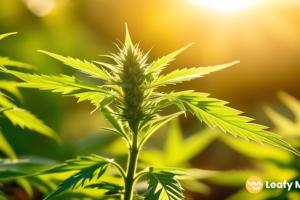
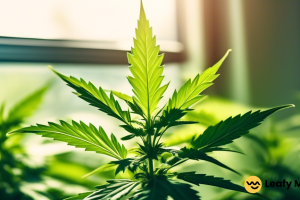





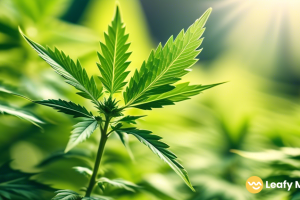
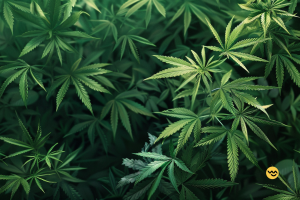
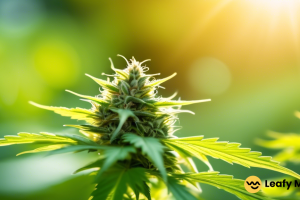
Leave a Reply